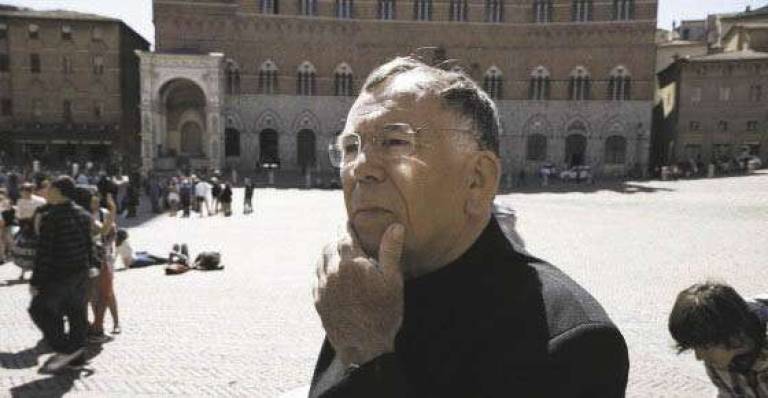Seeing the City as Art

How Jan Gehlredesigned New York
If you empty it out, they will come.
This is the working premise of Danish architect Jan Gehl. Here is your chance to learn about the chap responsible for all the initial bitching about those silly looking chairs in Times Square when traffic was forbidden and space opened up for--of all things-- people and their ephemeral pleasures like eating and reading. Bike lanes and mandatory greenery followed soon after.
But it's not just New York. His native Copenhagen was the incubator for Gehl's ideas, and most touchingly and tellingly, Christchuch New Zealand, where his firm was hired for plans to rebuild after the devastating earthquake of 2011. The unprepossessing, mild-mannered Gehl, professor emeritus and head of his own architecture firm, is interviewed in a current film, The Human Scale, about his work. He is also the author of a just-released book, How to Study Public Life.
Admitting he was initially skeptical, he has come to believe that if you take away cars, people will come to replace them. A kind of public life, and human connection, will result. The over-all question for him and his acolytes is "What is the way for measuring human happiness in the city?" When was the last time you heard that, or anything even that quaintly idealistic?
Opening up space is one approach; another is reducing the height of buildings. Bicycles are a given. While it may have been a natural for Denmark, Janet Sadik-Kahn, Commissioner of the City Department of Transportation, was so impressed she hired Gehl to re-imagine New York City streets. (All this time you thought it was a suddenly creative Bloomberg, right?) Other cities discussed are ChongQung China, and Melbourne, now considered the world's most livable city. Alleys formerly filled with garbage are now lined with lively bistros. In the words of a city resident "the streets have become our living room." India still looks to be a huge challenge though. And you can't help but wonder how Los Angeles might look or work without its autos.
With statistics of coming population booms to give Jane Jacobs nightmares, we learn that in thirty-five years 80 percent of the world's population will live in cities. Gehl rejected Robert Moses' solution to build "up" and let cars into the city; he believes that we have gone against the idea of community and extended family in living alone, or in small cramped spaces without a sense of multi-generational roots. The one-family nuclear house of the 1950s was the worst of all: demonstrated to be the most health-endangering with its sedentary car-centric culture, and lengthy commuting to the city for work.
In spots the doc, The Human Scale, directed by Andreas Dalsgaard, is just too preachy, earnest, and sometimes tedious. Yet images of Christchurch are poignant, especially letters posted on fences pleading with the re-builders to incorporate bits of the destroyed buildings in the new designs. Memory and buildings are interconnected, the city residents point out, citing first kiss, and so forth. Sounds right.
How to Study Public Life, by Jan Gehl and Birgitte Svarre, was published by Island Press. The Human Scale, a documentary directed by Andreas M. Dalsgaard, shows at IFC Center.[]